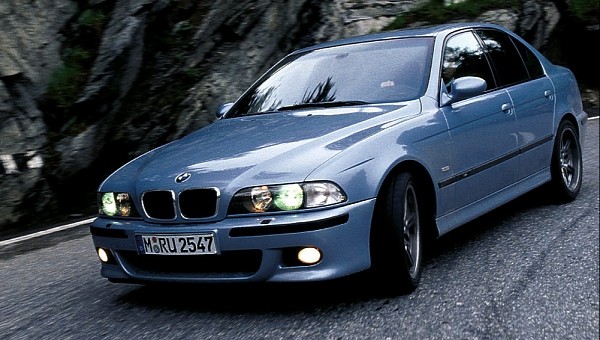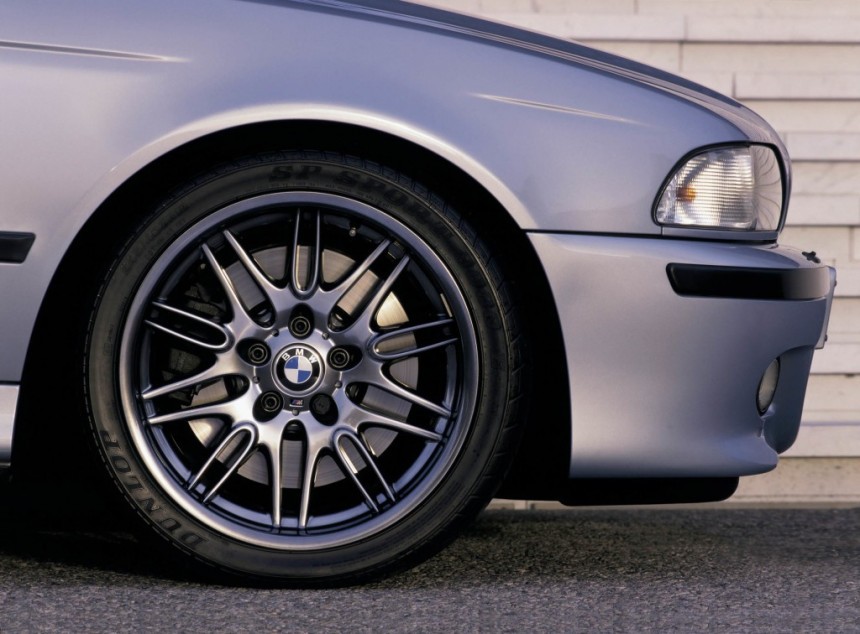It was the first V8-engined M5, and it is considered one of the best, if not the best, sports sedans ever made by many car enthusiasts and specialists. Their opinion is not for nothing since the E39 M5 was a gem of a vehicle, with an excellent engine under the hood and a sweet balance. But after years of existence, they started to show their age, and buying one in good shape is not easy.
You made the right decision if you're looking for an E39 M5 on the market since these were great cars suitable for daily driving, thrashing around corners, or just being driven once in a while. However, regardless of what you want to do with it, you should know a few things about this car before buying one.
BMW did a great job when it made this high-powered version of the E39. It used most bodywork panels for both vehicles and similar suspension elements. Still, the springs and shocks were different, obviously. So, don't be afraid if you stumble upon an M5 with a dent in the door and pimples on the hood. Parts for the E39 are still cheap, and there are still many of them on the road and in junkyards to find.
But there is one thing that you should definitely inspect closely: rust. Any sign of rust should trigger an alarm. If it's just one tiny spot, that's fine. But remove the underbody covers and check it thoroughly. Moreover, try to see if there is rust behind those shiny plastic side-sills covers. If there is a ton of rust, just walk away. That car is done. Or you can get it if it's dirt-cheap and use it for other good parts that might have.
Check the arms, bushings, and tie rods. Don't worry if they are not fine because you can still find new parts for the vehicle on eBay or many other stores. Remember: there are many E39s on the roads all over the world. Furthermore, they are not as expensive as you might think.
But when it comes to shock absorbers, then you might expect to spend about 1,000 USD for a set of four Koni shocks. Which, by the way, are the same as those installed in the 540i. The coil springs, on the other hand, will take less than 400 USD from your pockets if you go for high-quality ones. Which I'd recommend.
Don't expect the sat-nav (if present) to accurately show you the highways and streets. It's no longer updated. So you'll have to rely on your phone, Google Maps, Waze, or any other navigation app you want to use. Or just go for the old-style paper map.
The auto-dimming rearview mirror tends to leak its liquid after a while. You may use any E39 part instead, preferably a new one. Also, the front heating seats need to be checked. In addition, the LCD display inside the instrument cluster might show dead pixels. That is a common problem for most BMWs from that era. Fortunately, it's an affordable price for them, and you may replace them yourself if you have some basic skills and you don't think that the screwdriver is just a bigger toothpick.
Another important issue noticed on 62,000 miles (100,000 km) engines is the carbon buildups. Depending on the fuel used, the maintenance, and the driver's habits, this might be a problem. Sometimes, using a regular decarbonizing service might do it. Another component linked to the distribution is the chain tensioner. That needs to be replaced every 160,000 km.
There are also the MAF sensors (there are two) that may go wrong, and you need to replace them. In addition, the thermostat might need to be replaced.
One thing you should know is that these 400 PS (396 hp) V8s are burning a pint (1 liter) of oil between changes. The maintenance for these M5s is costlier than on a regular E39. You need to perform an oil change every 5,000 miles, and that includes the oil filter and the air filter.
Since the M5 was offered exclusively with a three-pedal setup, check the clutch assembly. You can't cheap out with this, and you need to replace all components, not just the disc.
Last but not least, pay attention to the alloy wheels. After a while, they start to peel off. While that's not a technical problem, you don't want to show up at a car meet with those looking like that.
BMW did a great job when it made this high-powered version of the E39. It used most bodywork panels for both vehicles and similar suspension elements. Still, the springs and shocks were different, obviously. So, don't be afraid if you stumble upon an M5 with a dent in the door and pimples on the hood. Parts for the E39 are still cheap, and there are still many of them on the road and in junkyards to find.
But there is one thing that you should definitely inspect closely: rust. Any sign of rust should trigger an alarm. If it's just one tiny spot, that's fine. But remove the underbody covers and check it thoroughly. Moreover, try to see if there is rust behind those shiny plastic side-sills covers. If there is a ton of rust, just walk away. That car is done. Or you can get it if it's dirt-cheap and use it for other good parts that might have.
Going from bottom-up
While the car is still on an elevator, check for signs of any leaks. Verify the rear differential and the gearbox. These, too, are usually strong enough to endure tons of abuse, but only if they are maintained correctly. So, if you want to buy that vehicle, be prepared to flush both of them.But when it comes to shock absorbers, then you might expect to spend about 1,000 USD for a set of four Koni shocks. Which, by the way, are the same as those installed in the 540i. The coil springs, on the other hand, will take less than 400 USD from your pockets if you go for high-quality ones. Which I'd recommend.
Interior
Like most cars, the E39 M5 was not spared by the passing of time. So you might expect some switches and regulators for the windows to be worn out. In addition, check the leather seats (which were fitted as standard) since they might need a refresh if they are poorly maintained. Depending on the options, some vehicles were also fitted with leather-wrapped dashboards.Don't expect the sat-nav (if present) to accurately show you the highways and streets. It's no longer updated. So you'll have to rely on your phone, Google Maps, Waze, or any other navigation app you want to use. Or just go for the old-style paper map.
Engine/transmission
Now for the specific part of this vehicle. You must know that the 4.9-liter V8 came with VANOS technology. It's like the VTEC from Honda but made by BMW. If this system runs out of oil, gets worn out, and emits strange noises during cold starts. For this, you'll need original parts, which might cost more than just a washer and a sealing. Also, check all the rubber parts, hoses, and all. You must change them if the previous owner didn't do it already.Another important issue noticed on 62,000 miles (100,000 km) engines is the carbon buildups. Depending on the fuel used, the maintenance, and the driver's habits, this might be a problem. Sometimes, using a regular decarbonizing service might do it. Another component linked to the distribution is the chain tensioner. That needs to be replaced every 160,000 km.
There are also the MAF sensors (there are two) that may go wrong, and you need to replace them. In addition, the thermostat might need to be replaced.
Since the M5 was offered exclusively with a three-pedal setup, check the clutch assembly. You can't cheap out with this, and you need to replace all components, not just the disc.
Final details
The M5 was built to last, and if maintained properly, it will be around longer than most other sports sedans ever built. Its performance is still respectable even after two decades after it was withdrawn from the assembly lines. The 4.9-liter V8 produces 400 PS (396 hp) and can sprint the car from naught to 62 mph in under 5.5 seconds on its way to a top speed of 155 mph (250 kph). Its balance and handling are excellent. But also, you need to pay attention to the DSC+T (Dynamic Stability Control + Traction) since sometimes it fails. It might be just a sensor, but it still needs to be replaced.Last but not least, pay attention to the alloy wheels. After a while, they start to peel off. While that's not a technical problem, you don't want to show up at a car meet with those looking like that.

















































